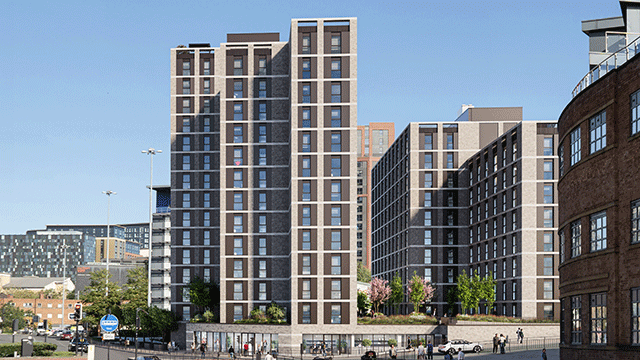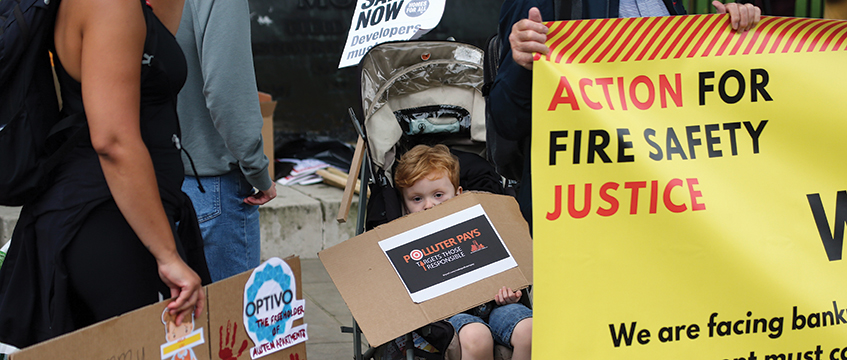Lease extension – Purchase price – Deferment rate – Leasehold valuation tribunal departing from generic Sportelli rate of 5% for flats by applying further 0.75% Zuckerman addition for property in West Midlands – Whether compelling evidence required to support such addition in particular case – Whether evidence justifying addition on facts of case – Appeal allowed in part
The leasehold valuation tribunal (LVT) was asked to determine the premium payable by the leaseholder of a two-bedroom, ground-floor maisonette in Halesowen, West Midlands, to acquire an extended lease of those premises from the appellant landlord under Chapter I of Part I of the Act. The property was one of four maisonettes, each with its own separate entrance, in a two-storey, purpose-built building in a cul-de-sac largely comprising other buildings of similar design. The lease, which dated from 1962, imposed extensive repairing covenants on the leaseholder but only very limited covenants on the part of the landlord. The lease had 48.29 years left to run when the leaseholder exercised her right under the Act to acquire a new lease for a term equal to the unexpired term plus 90 years at a peppercorn rent.
The parties agreed that the freehold vacant possession value of the maisonette was £96,600 but differed as to the appropriate deferment rate to be applied to it in calculating the premium payable for the new lease. The LVT adopted the rate of 5.75% for which the leaseholder contended, comprising the generic 5% rate for flats laid down in Lord Cadogan v Sportelli [2007] 1 EGLR 153plus the 0.75% addition made in Zuckerman v Trustees of the Calthorpe Estate [2009] UKUT 235 (LC); [2010] 1 EGLR 187 for other flats in the Midlands area, made up of an additional 0.5% to reflect poorer growth outside the prime central London area (PCL) and a further 0.25% to reflect obsolescence and deterioration. The LVT took the view that, while no new evidence on the matter had been adduced before it, it was now generally accepted that a higher deferment rate should be adopted in the Midlands area. It concluded that the price payable was £10,407.
The appellant appealed. It contended that a departure from the Sportelli rate had to be supported by compelling evidence in the particular case and that the LVT was not entitled simply to rely on Zuckerman in the absence of such evidence.
Held: The appeal was allowed in part.
(1) Factual or opinion evidence given to the appellate tribunal in an earlier case and recorded in its decision, and conclusions by that tribunal on issues of fact, were admissible as evidence in subsequent cases before an LVT or the Upper Tribunal. A subsequent tribunal was entitled to take into consideration and give weight to a finding of a previous appellant tribunal on an issue of fact, provided it did so in the light of the other evidence called in the particular case. While previous LVT decisions were not useful evidence in subsequent proceedings, the same did not apply to decisions of the appellate tribunal: Arrowdell Ltd vConiston Court (North) Hove Ltd [2007] RVR 39; [2013] PLSCS 278 considered. However, not all decisions of the appellate tribunal were of equal weight and a first-tier tribunal was not obliged to reach the same decision on an issue of fact. Each case had to be decided on the evidence adduced in it.
The “guideline” decision in Sportelli stood apart from that general rule, both because its subject matter, the deferment rate for PCL property, was unlikely to vary over time or according to factors peculiar to individual cases and because of the breadth and quality of the evidence considered by the Lands Tribunal, which could not easily be reassembled in another enfranchisement case. The role of the appellate tribunal in promoting consistent practice in the land valuation matters over which it has jurisdiction was one of its most important functions and was not confined to the promotion of consistency in valuation methodology; it could extend to matters of quantification, if the considerations underlying the quantification were of general application. However, the evidential focus in Sportelli had been on PCL and the Court of Appeal in that case had left open the possibility of “further evidence” being called in cases directly concerned with other areas: see [2007] EWCA Civ 1042; [2008] 1 EGLR 137. While the PCL rateswould still form the starting point for other regions, there was no suggestion that the “further evidence” that might be called in such cases would have to be especially cogent or compelling to justify a departure from those rates, although first-tier tribunals considering such a departure for properties in the West Midlands, or elsewhere outside PCL, should bear well in mind any limitations in the scope or quality of the evidence that they received. The further evidence should provide a reliable indication of a long-term movement in residential values, and evidence relating specifically to data about the appeal property itself was also likely to be necessary: Daejan Investments Ltd v The Holt (Freehold) Ltd [2008] PLSCS 146 applied.
(2) The evidence in Zuckerman had been sufficiently clear, and covered a sufficient period, to establish that the difference between past rates of long-term growth in PCL and in the West Midlands was considerable and would cause an investor to reduce its bid to a degree that required a 0.5% increase in the risk premium. The difference between the perspectives of purchasers in those different markets had justified the conclusion that the greater risk of deterioration in a modest West Midlands property, as compared to much more valuable PCL properties, was not fully reflected in their respective vacant possession values and so required a compensating adjustment in the risk premium. The evidence and representation on both sides in Zuckerman were of a much higher calibre than might ordinarily be expected in relatively modest cases. The LVT in the instant case had been was entitled to rely on Zuckerman as a sufficient basis for the additional 0.5% that it added to reflect poorer long-term growth in the West Midlands: Re Clarise Properties Ltd’s appeal [2012] UKUT 4 (LC); [2012] 1 EGLR 83 applied.
(3) However, so far as the Upper Tribunal in Zuckerman hadapplied a further 0.25% adjustment to reflect the greater risk of obsolescence and deterioration, any such allowance had to be based on the characteristics of the particular property under consideration. Only in exceptional cases would the vacant possession value of a property fail to reflect the risk of deterioration. Something more than age or a current poor condition was required to justify any additional allowance. The LVT in the instant case had erred in simply adopting the 0.25% allowance in Zuckerman without identifying any additional feature that would strike a prospective investor as liable to create a greater risk of deterioration, over the remainder of the term, than was already accounted for in its freehold vacant possession value. On the evidence, there were no such features and no further adjustment to the risk premium should be made on those grounds.
(4) Finally, the terms of the maisonette leases were not such as to justify the use of the 4.75% Sportelli deferment rate for houses as a starting point in place of the usual 5% for flats, with its 0.25% allowance for management difficulties, notwithstanding that the terms of the leases placed a minimal management burden on the appellant, made each leaseholder responsible for the repair of the structure and exterior of his own property and required that the leaseholder should if necessary rebuild the property.While the Lands Tribunal in Sportelli hadcontemplated that there might be cases where a greater allowance might be justified in cases where exceptional management difficulties were in prospect, it had said nothing of circumstances in which such an allowance would be inappropriate altogether. The 5% rate was appropriate on the facts of the particular case: Lethaby’s appeal [2010] UKUT 86 (LC); [2010] PLSCS 211 considered.
(5) In light of the above, the appropriate deferment rate was 5.5% rather than the 5.75% adopted by the LVT; the purchase price for the new lease was therefore £10,800.
Oliver Radley-Gardner (instructed by P Chevalier & Co, of Surbiton) appeared for the appellant; the leaseholders did not respond to the appeal.
Sally Dobson, barrister








